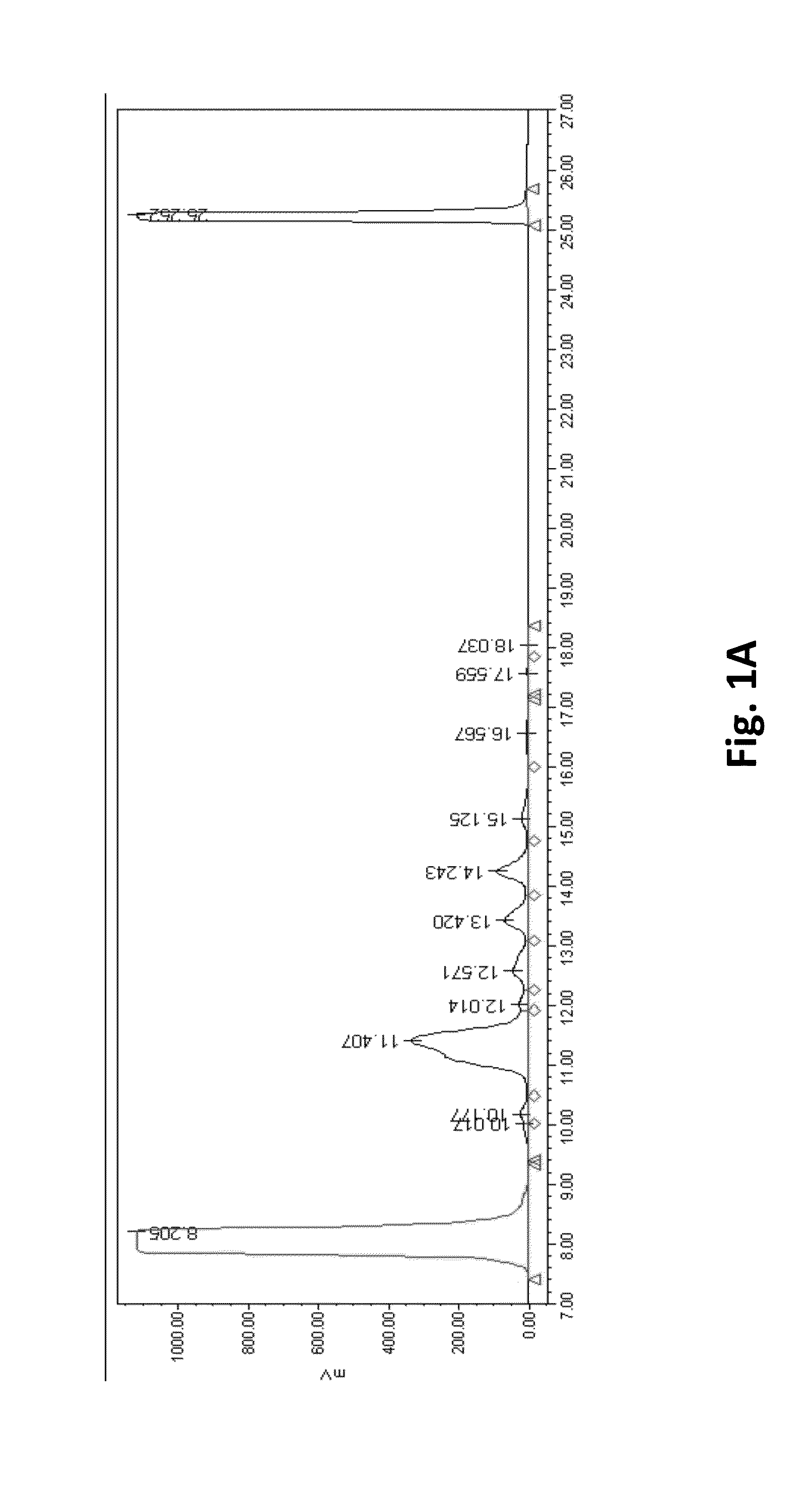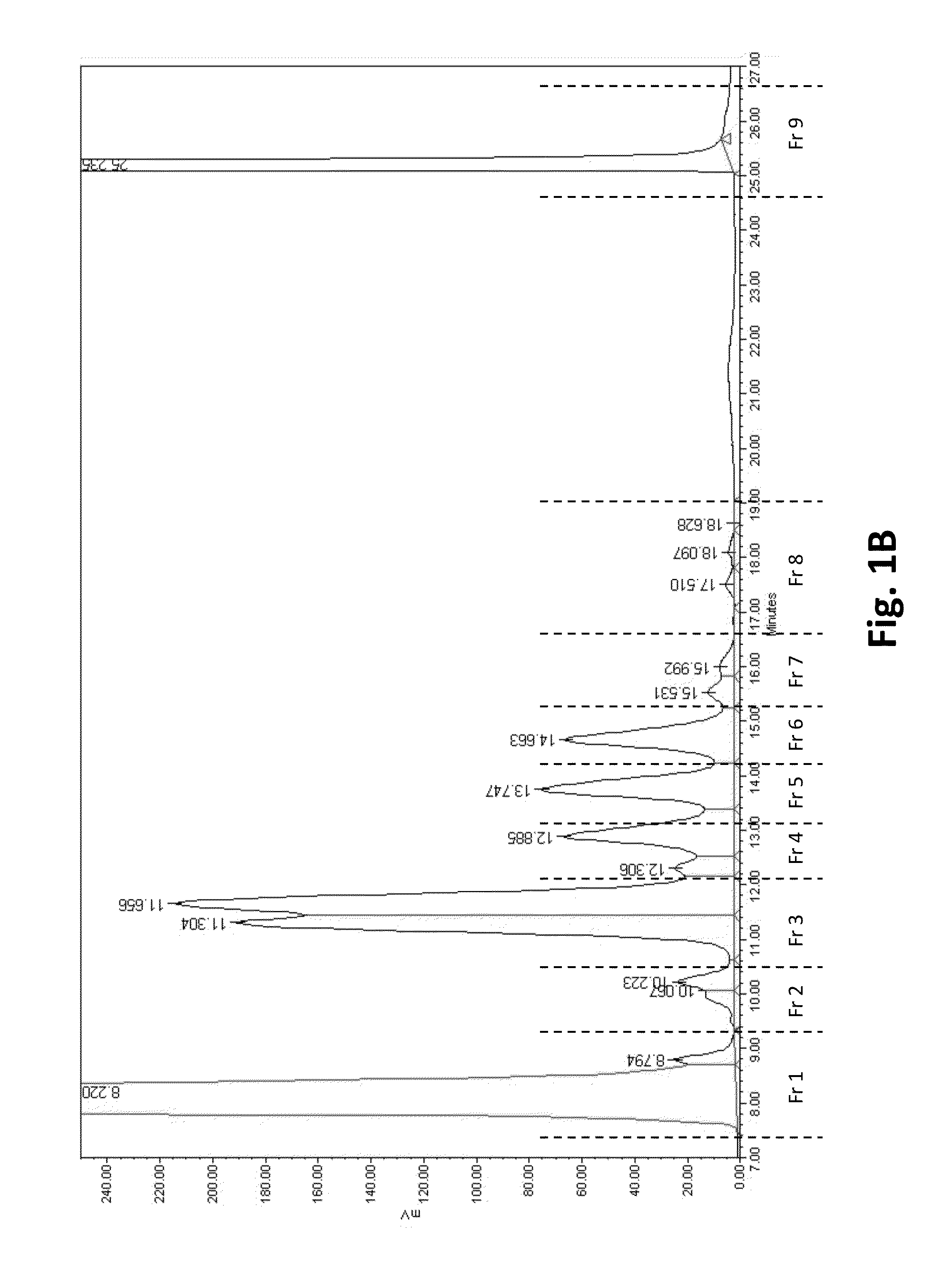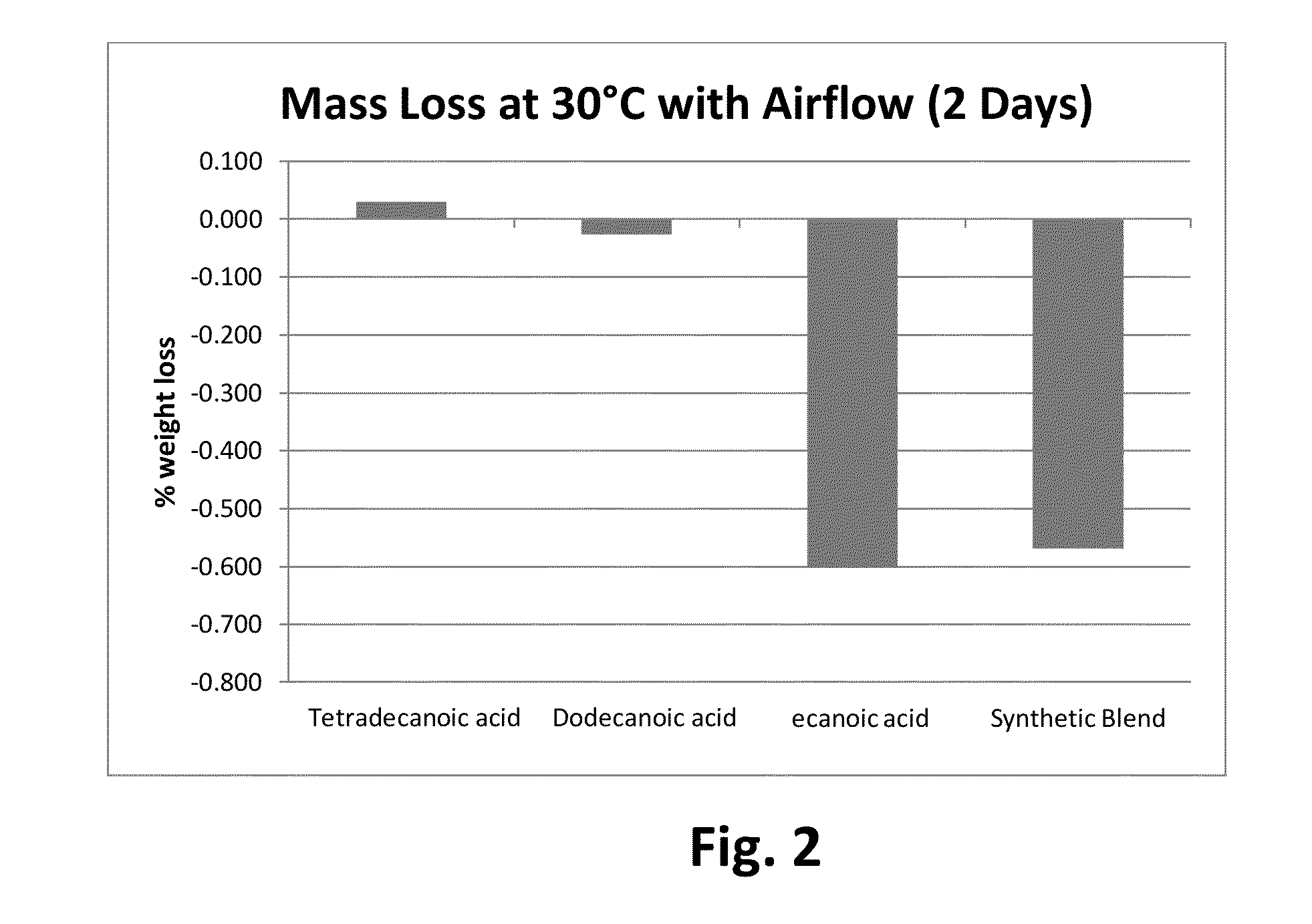Bee Attractants
- Summary
- Abstract
- Description
- Claims
- Application Information
AI Technical Summary
Benefits of technology
Problems solved by technology
Method used
Image
Examples
example 1
Purification and Identification of Chemicals in Cocoon Extracts
[0060]Parental O. lignaria are originally sourced from Utah, but emerged in California to produce progeny, from which cocoons are obtained after emergence in the subsequent year. Cocoons are placed in brown paper bags and then in plastic Ziploc® bags (SC Johnson, Racine, Wis.) and are stored at −5° C. until ready for processing. After warming to room temperature, contaminating frass, meconium and other debris are removed with forceps and an artist's brush prior to initiation of lipid extraction. For each set of extractions, 100 largely whole O. lignaria cocoons are submersed in 200 ml CHCl3 for five minutes and then undergo a 30 second rinse with 25 ml CHCl3. Following filtration through coarse filter paper (Fisherbrand® PN 09-790-14G (Thermo Fisher Scientific, Waltham, Mass.)), the solvent volume is reduced without heat using a rotary evaporator and a stream of nitrogen gas. Cocoon extract samples are layered with argon...
example 2
Field Tests with Fractions
[0063]Fractions 1, 3, 4, 9, and a pool of Fractions 5, 6, 7, and 8 from the HPLC column are applied to separate filter papers so that each filter paper contains 5 CE. As a negative control, CHCl3 is applied to its own filter paper. As a positive control, an unfractionated CHCl3 extract of cocoon is applied to filter paper at 5 CE. Fraction 2 is not used because it contained very little material. Fractions 5, 6, 7, and 8 are combined together because of the small amount of material in the fractions.
[0064]Three field experiments are conducted using these filter papers containing cocoon extracts. One experiment conducted in an almond orchard in California, small, corrugated plastic box artificial nest sites (20×23×20 cm) are hung facing southeast in almond trees in an orchard with two bundles of 19 paper tubes in each artificial nest site. The tubes are sealed at the back with corks and are used by the bees as nesting cavities. The center tube contains a piece...
example 3
Identification of Chemicals in Fraction 9
[0068]Gas chromatography mass-spectrometry (GC-MS) is performed to further identify the chemicals in each fraction. Individual lipid components are separated by capillary gas chromatography (GC), quantified by their flame ionization detector (FID) response, and identified by GC-MS. GC-FID analyses are performed using an Agilent 6890 gas chromatograph (Agilent Technologies, Santa Clara, Calif.) equipped with a temperature- and pressure-programmable on-column injector and a DB-1MS capillary column (J&W Scientific, Folsom, Calif.) (0.2 mm×12.5 m, 0.33 μm phase thickness). The column oven temperature program is 50° C. for 30 seconds, then increases to 225° C. at 25° C. / minute, next increases to 340° C. at 10° C. / minute and is held at this temperature until all peaks elute. Samples are introduced onto the column via a 2 m retention gap of uncoated, deactivated fused silica with the hydrogen carrier at 20 psig. After 30 seconds, the pressure is red...
PUM
 Login to View More
Login to View More Abstract
Description
Claims
Application Information
 Login to View More
Login to View More - R&D Engineer
- R&D Manager
- IP Professional
- Industry Leading Data Capabilities
- Powerful AI technology
- Patent DNA Extraction
Browse by: Latest US Patents, China's latest patents, Technical Efficacy Thesaurus, Application Domain, Technology Topic, Popular Technical Reports.
© 2024 PatSnap. All rights reserved.Legal|Privacy policy|Modern Slavery Act Transparency Statement|Sitemap|About US| Contact US: help@patsnap.com










